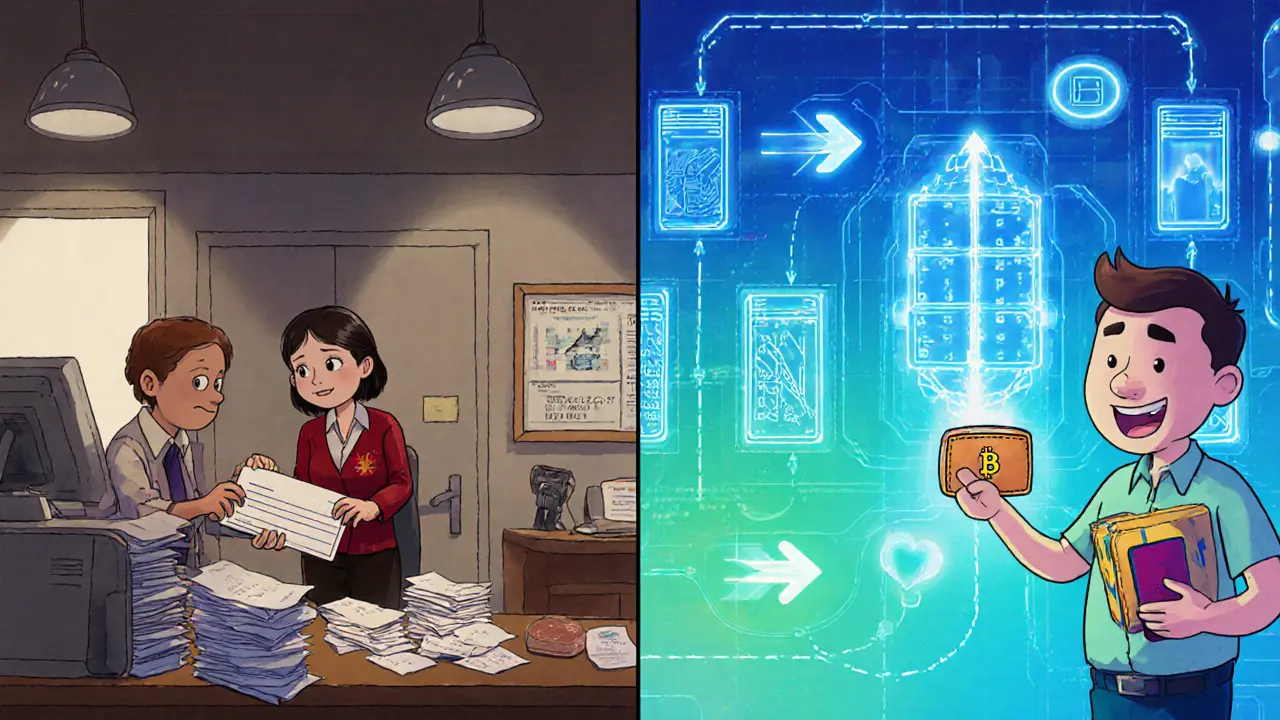Blockchain Charity: Transforming Giving with Crypto
When you hear blockchain charity, the use of blockchain technology to track, verify, and distribute charitable funds, you’re looking at a new way to make donations clearer and more efficient. Also known as crypto philanthropy, it relies on smart contracts, self‑executing code that enforces donation rules without a middleman and crypto donations, digital assets sent directly to cause wallets. This blend creates decentralized philanthropy, a model where no single party controls the flow of funds, resulting in transparent fundraising, public, immutable records that anyone can audit. The combination means donors can see exactly where every token goes, and charities can prove impact without costly paperwork.
Why blockchain charity beats traditional giving
First, transaction costs shrink dramatically. Sending Bitcoin or a stablecoin across borders often costs a fraction of a percent, while banks can charge 3‑5 % or more. Second, speed improves – a donation that might sit in a legacy system for days arrives in seconds on the blockchain. Third, traceability builds trust: every move is recorded on a public ledger, so auditors and supporters can verify that funds aren’t diverted. Finally, smart contracts can automate conditional payouts, such as releasing money only when a project hits a verified milestone. In short, blockchain charity enables transparent fundraising, cuts fees, and adds programmable accountability.
But the model isn’t without hurdles. Regulators in many countries still treat crypto as a commodity, a security, or a foreign currency, which creates uncertainty for nonprofits. Volatility is another concern; a sudden drop in token value can erode the amount actually delivered to beneficiaries. Moreover, many charities lack the technical expertise to set up wallets, write smart contracts, or manage private keys safely. Overcoming these barriers often means partnering with platforms that specialize in crypto‑ready philanthropy or hiring advisors who understand both compliance and blockchain.
Real‑world pilots show the potential. UNICEF’s CryptoFund uses blockchain to accept donations in various tokens and then allocate them to emergency relief projects, providing donors with a live dashboard of fund flow. GiveWell’s GiveDirectly experiment sent stablecoins to families in Kenya, cutting the distribution time from weeks to minutes and allowing recipients to spend the money instantly via mobile wallets. Even voting initiatives, like the blockchain voting security studies, demonstrate how cryptographic proof can protect both elections and charitable voting mechanisms, ensuring that donor‑chosen projects truly reflect community preferences.
To get started, nonprofits need three core tools. A secure wallet (hardware or software) stores the incoming crypto safely. Donation platforms such as BitGive or The Giving Block provide ready‑made interfaces, converting fiat to crypto and handling compliance checks. Finally, a set of smart‑contract templates—often written in Solidity for Ethereum or in Rust for Solana—lets charities define rules like “release 50 % when 1,000 beneficiaries are verified.” These building blocks lower the technical barrier and let charities focus on impact rather than code.
Looking ahead, the trend points toward broader adoption. As more governments recognize stablecoins and issue guidelines, the legal fog will lift, making it easier for charities to report crypto donations on tax forms. Emerging standards for impact tokens aim to embed measurable outcomes directly into the blockchain, so donors can see not just money moved but lives changed. Combined with growing public awareness of carbon‑offset tokens and other ESG initiatives, blockchain charity is set to become a cornerstone of the future nonprofit ecosystem.
Below you’ll find a curated collection of articles that dive deeper into each piece of this puzzle— from technical guides on smart‑contract fundraising to case studies of successful crypto‑driven campaigns. Use these resources to build your own transparent giving strategy, explore the latest regulatory updates, and discover tools that can turn digital generosity into real‑world impact.

